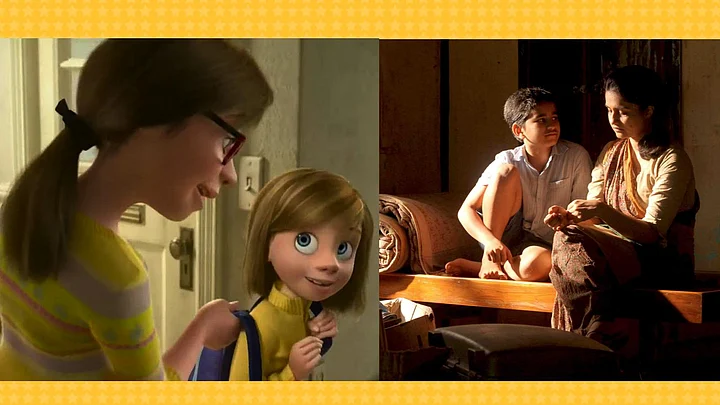Movie buffs were in for a treat last Friday as two of the most gorgeous films of the year – Killa and Inside Out - released on the same day. It turns out, the release date wasn’t the only thing similar between both the films:
1. A Child Moving to a New House
One of the most painful ordeals a child can go through is leaving his or her old big childhood home and moving to a smaller house in a polar opposite location. New place, new school, new people, dusty new house, tiny new bedroom – it’s scary and it’s frustrating. Both Pixar’s Inside Out and Avinash Arun’s Killa essentially have the same aforementioned ordeal as the central plot.
Where both the films actually complement each other is that the girl in Inside Out is upset about moving from a more rural landscape to the big city, whereas the kid from Killa is morose about moving from a big city to a rural location. In both films, however, the food in the new city sucks.
2. Both Kids Attempt to Flee
In both films the child tries to go far away from the dreaded new home. In Inside Out the girl in frustration boards a bus, while the boy in Killa boards a fisherman’s boat. Eventually they both realize they have to go back home, because going away won’t really help them.
3. A Communication Gap with Parents
In both films, in the children’s minds, the parents are ignoring them and are only spending time focusing on their work. Both kids react adversely to this behavior from their respective parents and are grounded.
In both films the child has to open up to the parents to make them realize how difficult it is to just adjust to change. They need the parents’ emotional support. They need a hug, or a dozen. The parents do get an inkling of this, and they do make an effort to try to comfort the child – the father from Inside Out tries to activate Goofball Island, the mother tells the girl how lucky they are to have her. The mother from Killa invites the boy’s friends home for a get together.
Also in both films we see the parents’ inability to make their children understand their helplessness. They know that the children are upset, but there’s little one can do when one has a new job at a new city. Moreover, the conflicts in both films resolve with the communication gap between the parents and the child reducing, and the child gaining some sort of closure.
4. The Central Set Piece is the Architecture of the Mind
The fort in Killa is used as a metaphor for the boy’s mind - abandoned, desolate, yet stoic in the face of a turbulent sea. He spends a lot of time introspecting within the castle, recalling old memories, trying to deal with new ones, letting his emotions overwhelm him. The girl in Inside Out does the exact same thing throughout the film.
5. Coping with Loss
For all the cerebral intricacies of Inside Out and the poetic heft of Killa, the basic motif in both films is simply a child coping with loss. The boy in Killa has lost his father, and also all his friends from his old home. The girl from Inside Out has also lost her childhood friend and her most cherished memories. They’ve both lost elements they grew up with, and are faced with the situation to grow older with the expectation of being happy regardless. The biggest similarity, however is that both films’ endings demonstrate that it is ok to be sad, because recognizing that emotion can help you move on in life.
Now the only question that remains is, has anyone ever seen Avinash Arun and Pete Docter in the same room at the same time?
(At The Quint, we question everything. Play an active role in shaping our journalism by becoming a member today.)
